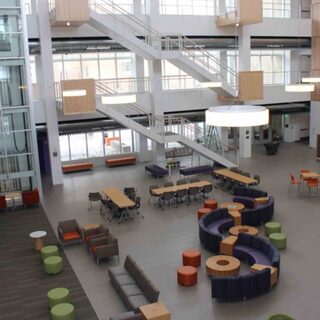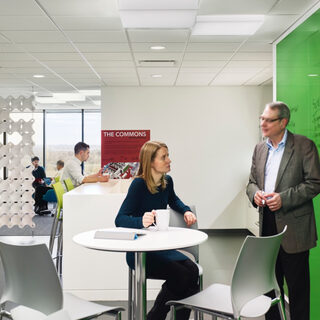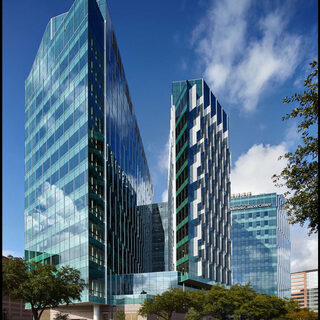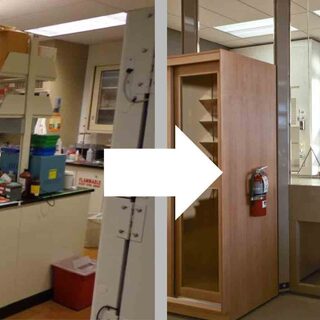Tradeline's industry reports are a must-read resource for those involved in facilities planning and management. Reports include management case studies, current and in-depth project profiles, and editorials on the latest facilities management issues.
Latest Reports
Enzi STEM Building Ushers in New Era of Science Instruction at the University of Wyoming
With the second-lowest population density of any state in the US and two cows for every human, Wyoming has long been a land of wide-open spaces, except for science students at the University of Wyoming. For decades, UW students have studied science in “dingy, dark, old basement labs,” says Daniel Dale, department head and professor of physics and astronomy at the University of Wyoming. But a new building has changed all of that—with active learning spaces, abundant natural light, and a new emphasis on collaboration—and increased student attendance and performance to boot.
Hospital Expansion Inspires Workplace Redesign and Cultural Change
When the administrators at the Children’s Hospital of Philadelphia (CHOP) realized their space needs were growing faster than their existing buildings could accommodate, they did something unconventional: They approached the problem as a research project. Beginning in 2012, they analyzed their clinical research space needs, reviewed their available real estate, and visited other research facilities to observe best practices.
University of Texas MD Anderson Cancer Center’s New Space Allocation System
With a portfolio of 23 research buildings ranging from 30,000 gsf to almost 800,000 gsf, the research portfolio of the University of Texas MD Anderson Center in Houston covers nearly 4.5 million gsf. Despite bringing 11 of those buildings online in the past 15 years—nearly one building per year—the researchers at MD Anderson were left wondering why, even with all those facilities, there did not seem to be enough space. This was partially due to unprecedented growth, now with close to 22,000 employees, but that didn’t fully account for the problem.
Penn Renovation Yields Class A Laboratory Space for Half the Cost of New Construction
Retrofit or renovate? It’s a common question facing many owners of laboratory facilities built in the 1970s, and the answer isn’t always obvious. A simple retrofit of building systems can improve reliability and cut energy consumption significantly, but a gut renovation can be transformative by enhancing performance and providing associated benefits in recruitment and retention, quality of life, and scientific productivity––benefits that can more than offset the higher initial cost.
Stable Second Quarter Drives Continued Growth in Construction and Other Sectors
After a soft May, second quarter data indicates that job gains were stronger in June 2016, while economic activity has been expanding at a moderate rate. Overall job growth in the first two quarters of 2016 declined from an average of 245,000 per month to 172,000 per month. The slowing trend could be part of a cycle witnessed in previous expansions. Commodity prices appear to have stabilized at a reduced level, which increases room for inflation in construction and other sectors.





